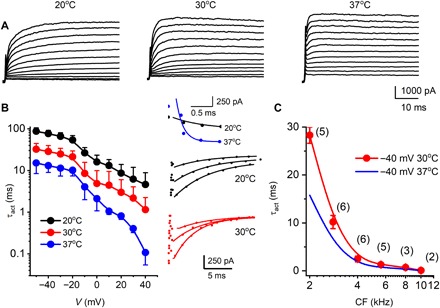Fig. 3. Activation and deactivation kinetics of IKn in OHCs at different temperatures, cochlear locations, and CFs.

(A) Family of IKn traces recorded from an OHC located at a 2-kHz frequency-place map of a 24-day-old mouse cochlea at room temperature (20°C, left), 30°C (middle), and physiological temperature (37°C, right). Currents were elicited from a holding voltage of −120 mV, and the voltage steps ranged from −120 to 50 mV with ΔV = 10 mV. The deactivation test voltage was at −30 mV (not shown). (B) Relations between activation time constants (τact) and voltages at 20°C (●), 30°C (●), and 37°C (●). The activation kinetics were fitted with a single exponential function [see insets in the right panel for examples of fitted traces of activation (top) and deactivation (bottom)]. Summary data were obtained from 3- to 4-kHz OHCs from five cochleae (n = 14). The data represent recordings in which three temperatures (20°, 30°, and 37°C) were successfully achieved from the same OHCs. The Q10 of IKn, which was expressed as where T is temperature and τ is the time constant of activation, was 2.3. (C) Summary data for τact of IKn generated at a step voltage of −40 mV from OHCs at different CFs of the cochlea at 30°C (●); n = 27 cochleae. The number of OHCs for each data point is indicated (●), and the extrapolated τact at 37°C was obtained using Q10 = 2.3 (solid blue line).
